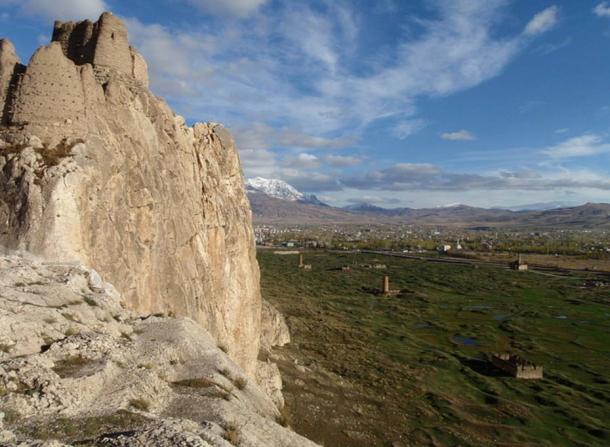Long hidden Iron Age castle revealed in 3,000-year-old ruins in Van Province, Turkey
The province of Van in Turkey is home to many amazing fortresses, castles and relics of the ancient past. Researchers have now located the site of castle ruins in Van, Turkey, near Hoşap Castle (pictured), which date back to the early Iron Age .
According to Archaeology News Network , the site is situated about 80 kilometers (50 miles) from the Yurtbaşı neighbourhood of Gürpınar district.
Village head İrfan Yücel, and Yüzüncü Yıl University (YYÜ) History of Art Department Professor Mehmet Top revealed the 3,000-year-old ruins, located on a high hill reached by way of a challenging hour-long hike.
Excavations have been ongoing on nearby Hoşap Castle since 2007, and both the ruins of the new site – referred to as Derbend Castle – and cultural artifacts have been found. Professor Top recently collected pottery pieces for study.
Mehmet Top said of the discovery, “My examinations showed that this castle might be from the early Iron Age. The remains of stones and ceramic pieces on the ground prove that this place was a settlement. Probably it was a tableland settlement.
Traces show us that it dates back to the pre-Urartian era, namely the early Iron Age. This age starts in 1200-1300 B.C. and continues through 1800 B.C. We already know that castle architecture began in this era and continued later on.”
These early fortresses and castles were often built on heights overlooking villages, valleys and plateaus. Many of the still-standing castles were built later, during the Urartian kingdom (860 B.C.–590 B.C.) and were used for regional control, rather than for defense against foreign invaders. The eastern province of Van was the center of the Urartu civilization.
The notable Fortress of Van (Van Citadel) is a massive stone fortification built in the 8th and 7th centuries B.C. Sections of the walls are still standing, and it hosts an ancient inscription by Xerxes the Great.




Hurriyet Daily News writes that preliminary examinations have been made on the newly discovered Derbend Castle, and the Van Museum has been informed about the ancient site.
The castle requires further documentation to continue plans for restoration and preservation. Work on this will begin soon, says Mehmet Top.
